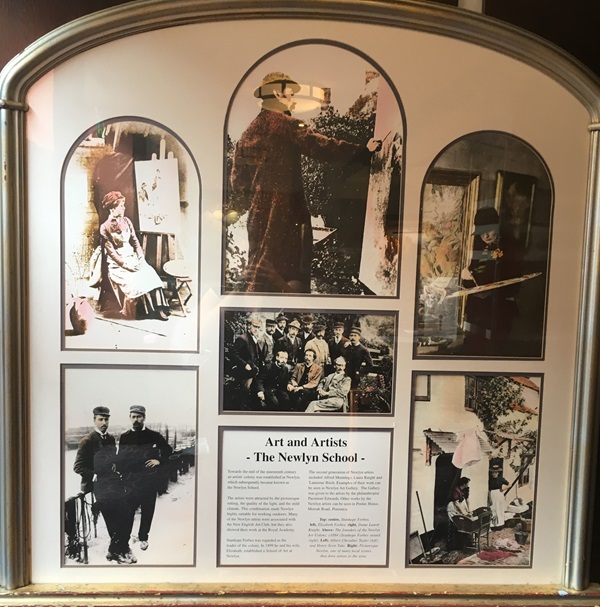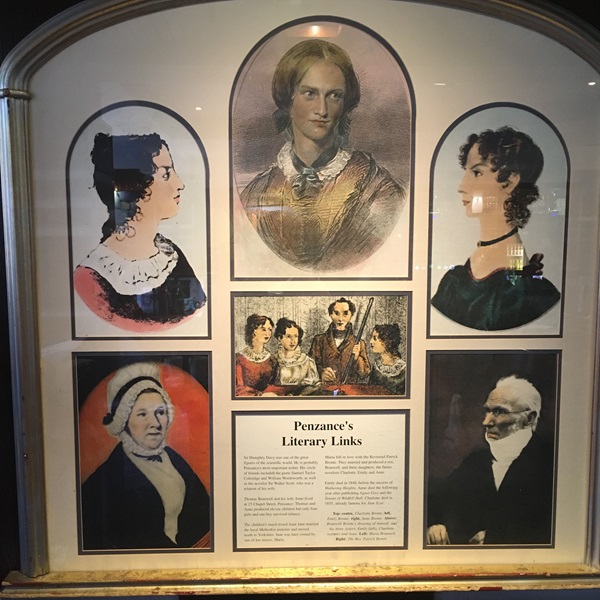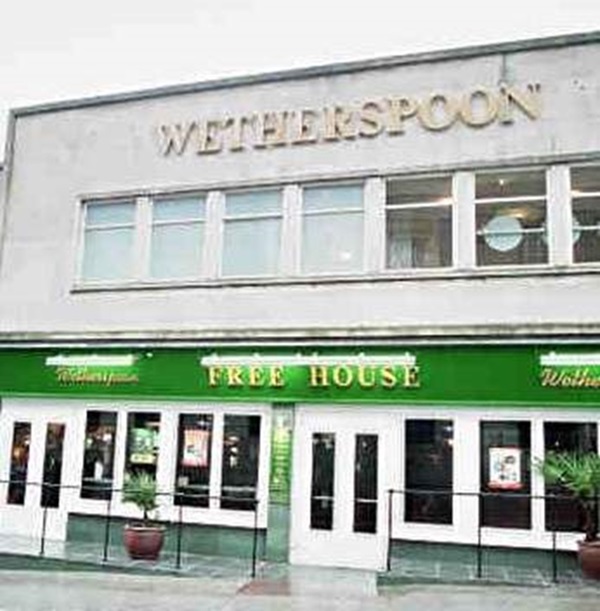4–8 Market Place, Penzance, Cornwall, TR18 2JA
A few metres from this pub is the site of the 17th mansion of the Tremenheere family. John was mayor of Penzance in 1655, since when the name of Tremenheere has appeared in the list of mayors on no fewer than nine occasions, the last time in 1797.
Prints and text about the Newlyn School.

The text reads: Towards the end of the 19th century an artist’s colony was established in Newlyn, which subsequently became known as the Newlyn School.
The artists were attracted by the picturesque setting, the quality of the light, and the mild climate. The combination made Newlyn highly suitable for working outdoors. Many of the Newlyn artists were associated with the New English Art Club, but they also showed their work at the Royal Academy.
Stanhope Forbes was regarded as the leader of the colony. In 1899 he and his wife, Elizabeth, established a School of Art at Newlyn.
The second generation of Newlyn artists included Alfred Munnings, Laura Knight and Lamorna Birch. Examples of their work can be seen in Newlyn Art Gallery. The gallery was given to the artists by the philanthropist Passmore Edwards. Other works by the Newlyn artists can be seen in Penlee House, Morrab Road, Penzance.
Top: centre, Stanhope Forbes, left, Elizabeth Forbes, right, Dame Laura Knight
Above: The founders of the newlyn Art Colony, c1844 (Stanhope Forbes seated right)
Left: Albert Chevalier Tayler (left) and Henry Scott Tuke
Right: Picturesque Newlyn, one of many local scenes that drew artists to the area.
Prints, illustrations and text about Penzance literary links.

The text reads: Sir Humphrey Davy was one of the great figures of the scientific world. He is probably Penzance’s most important writer. His circle of friends included the poets Samuel Taylor Coleridge and William Wordsworth, as well as the novelist Sir Walter Scott, who was a relation of his wife.
Thomas Branwell and his wife Anne lived at 25 Chapel Street, Penzance. Thomas and Anne produced eleven children but only four girls and one boy survived infancy.
The children’s much-loved Aunt Jane married the local Methodist minister and moved up north to Yorkshire. Jane was later visited by one of her nieces, Maria.
Maria fell in love with the Reverend Patrick Bronte. They married and produced a son, Branwell, and three daughters, the future novelists Charlotte, Emily and Anne.
Emily died in 1848, before the success of Wuthering Heights. Anne died the following year after publishing Agnes Grey and the Tenant of Wildfell Hall. Charlotte died in 1855, already famous for Jane Eyre.
Top: centre, Charlotte Bronte, left, Emily Bronte, right, Anne Bronte
Above: Branwell Bronte’s drawing of himself, and his three sisters, Emily (left), Charlotte (centre) and Anne
Left: Maria Branwell
Right: The Reverend Patrick Bronte.
External photograph of the building – main entrance.

If you have information on the history of this pub, then we’d like you to share it with us. Please e-mail all information to: pubhistories@jdwetherspoon.co.uk